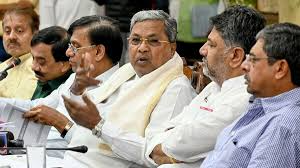Manufacturing PMI rises to 14-month high on buoyant export orders

Manufacturing PMI Rises to 14-Month High on Buoyant Export Orders
India’s manufacturing sector is showing significant progress, as evidenced by the rise in the Purchasing Managers’ Index (PMI). The PMI reached a 14-month high, thanks to strong export orders and steady domestic demand. The latest report highlights that buoyant export orders have driven the growth, indicating India’s manufacturing industry is regaining strength. At the same time, input price inflation has dropped to a four-month low. Despite rising costs of iron and steel, the overall reduction in input prices has eased pressure on manufacturers.
The latest PMI score of 56.3 is a positive indicator for India’s economy. It marks a solid increase from previous months, suggesting a recovery in manufacturing. With the global economy gradually recovering, the outlook for India’s manufacturing sector is optimistic.
Export Orders Fuel Growth
A key factor behind the rise in manufacturing activity is strong export demand. Several sectors, including textiles, chemicals, and engineering products, have seen increased orders from international markets. Export orders, particularly from the U.S. and Europe, are at their highest in recent months.
India’s manufacturers are regaining their competitive edge globally. The combination of cost-effective production, quality goods, and favorable trade policies has helped them secure these international orders. This is significant for India, as the export sector is crucial for the country’s economic growth.
Additionally, the Make in India initiative has contributed to increasing exports. By promoting local production, this initiative has enhanced India’s position as a key player in the global supply chain. The government’s focus on improving trade relations with other countries has also helped open new markets for Indian goods.
Reduced Input Price Inflation
The report also highlighted a drop in input price inflation to a four-month low. This reduction came despite the ongoing rise in the prices of iron and steel. Manufacturers saw a decline in other raw material prices, such as chemicals and plastics. This helped reduce the overall cost of production and eased pressure on manufacturers’ profit margins.
Iron and steel prices remain a concern for many sectors, especially in construction and automotive manufacturing. These raw materials are essential for industries such as engineering, machinery, and infrastructure. Despite this, the overall reduction in other input prices helped offset some of the rising costs.
Manufacturers can now focus on increasing production without the looming threat of skyrocketing input costs. With lower overall inflation in raw materials, manufacturers are more confident in meeting both domestic and international demand.
Rising Selling Prices Reflect Strong Demand
While input prices fell, selling prices for finished goods increased. This indicates that demand for manufactured products is strong. Manufacturers have been able to pass on some of the rising costs to consumers without significantly affecting demand.
This rise in selling prices is reflective of the improving market sentiment. As the global economy recovers, demand for products across various sectors has surged. Higher selling prices also suggest that consumers and businesses are willing to pay more for quality goods.
The rise in selling prices is also a sign that manufacturers are successfully navigating supply chain challenges and inflationary pressures. The increased demand for Indian products in global markets has allowed manufacturers to increase prices and maintain profitability.
Key Sectors Driving Growth
The manufacturing growth is not limited to a single sector. Several industries have seen significant improvements in export orders, including textiles, chemicals, and engineering products. India’s textile industry, for example, has benefited from rising global demand for clothing and fabrics.
The chemicals industry has also seen growth, particularly in segments like specialty chemicals and pharmaceuticals. As global demand for these products rises, India’s chemical manufacturers are capitalizing on the opportunities.
The engineering sector has performed particularly well, with rising demand for machinery, components, and automotive parts. These industries are benefitting from both domestic growth and increased exports to international markets.
Challenges Facing the Manufacturing Sector
Despite the positive trends, there are challenges. Rising costs for iron and steel remain a concern. While some input prices have fallen, iron and steel prices have continued to rise due to global supply chain disruptions. These materials are critical to several manufacturing sectors, including construction and automotive.
Additionally, global supply chain issues continue to affect the timely delivery of raw materials. Shipping delays and labor shortages in some regions have impacted production schedules. As demand continues to rise, the ability of manufacturers to manage these supply chain disruptions will be crucial.
Another potential challenge is the labor shortage. Many sectors are still grappling with shortages of skilled workers, which could hamper growth if not addressed. To ensure continued growth, companies may need to invest in upskilling their workforce and improving productivity.
Outlook for India’s Manufacturing Sector
India’s manufacturing sector is poised for continued growth. The positive PMI reading, strong export orders, and the reduction in input price inflation all point to a bright future. The government’s efforts to strengthen trade relations, improve infrastructure, and boost manufacturing capabilities will play a key role in this growth.
As the global economy continues to recover, India’s manufacturing sector will benefit from the return of demand for goods. If the country can maintain its competitive edge in key industries, the manufacturing sector will continue to drive economic growth.
The sector is also likely to see more investments in automation and digitalization. These investments will help increase efficiency, reduce costs, and improve the overall competitiveness of Indian manufacturers. With ongoing government support, the manufacturing sector is well-positioned to maintain its upward trajectory.
Conclusion
India’s manufacturing sector is witnessing a period of robust growth. The rise in the PMI, strong export orders, and reduced input price inflation all point to positive economic trends. With key sectors like textiles, chemicals, and engineering products driving growth, India is well on its way to becoming a dominant manufacturing hub globally.
While challenges like rising material costs and supply chain disruptions remain, the outlook for India’s manufacturing sector is optimistic. The continued government support, coupled with growing global demand, will help ensure that India’s manufacturing industry remains competitive in the coming years. As the sector recovers and expands, it will play a vital role in India’s economic growth and development.






